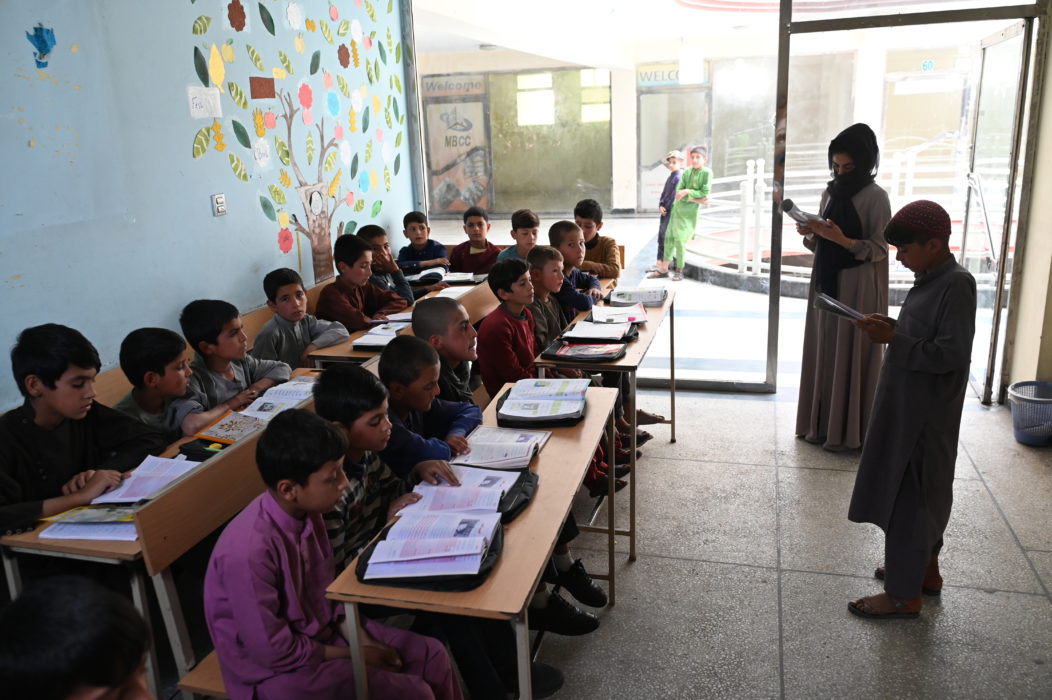Nous nous engageons à améliorer les conditions de vie en Afghanistan, fournir un accès à la santé et à l'éducation aux personnes dans le besoin.
QUI SOMMES-NOUS ?
Action for Development fournit des services essentiels de santé et d’éducation en Afghanistan, en ciblant les populations les plus marginalisées et vulnérables. À travers des projets rentables en modèle de cascade, AfD favorise la participation, l’autonomisation et l’appropriation communautaires de ses programmes.
AfD met en oeuvre des projets dans le renforcement des capacités des sages-femmes, l’éducation des enfants des rues, ainsi que celles des enfants en situation d’handicap, tout en continuant de fournir des services de santé à travers son centre de santé globale (CSG) et de ses programmes de formation de professionnels de santé. AfD apporte également de l’aide d’urgence en réponse aux catastrophes naturelles.
NOS PROJETS
L'Afghanistan en un coup d'œil
Là où la beauté et la tradition rencontrent la pauvreté et l'injustice
L'Afghanistan est un pays d’une grande richesse naturelle et d’une histoire millénaire. Situé au carrefour des routes commerciales reliant les anciens empires, il a été une plaque tournante des échanges économiques et culturels.
Malheureusement, des décennies de conflit ont ravagé le pays. Après la chute des talibans en 2001, un groupe de professionnels afghans a fondé Action for Development dans le but de soutenir la population locale dans ses efforts de reconstruction.
Entre 2001 et 2020, l'Afghanistan a réalisé des progrès considérables : la mortalité infantile a chuté de 25 % à 10 %, l’accès aux soins de santé de bases a été rendu possible pour la majorité des afghans et les droits des femmes et des jeunes filles se sont progressivement améliorés et ce même au niveau international. Aujourd'hui, ces acquis sont gravement menacés : les femmes et les filles d'Afghanistan ont particulièrement besoin de notre soutien.
97 % des afghans vivent aujourd’hui en dessous du seuil national de pauvreté, contre 47 % en 2020. Depuis le retour au pouvoir des talibans, les donateurs internationaux ont suspendu la majorité des financements non humanitaires et ont gelé des milliards de dollars d'actifs, avec des conséquences dévastatrices pour la population afghane. Les sécheresses et autres catastrophes naturelles ont également aggravé cette situation.
83% des décès maternels pourrait être évitée grâce à des soins de santé adéquats et à la formation médicale. L'interdiction faite aux femmes de s'instruire les empêche d'accéder aux soins de santé, tandis que l'augmentation de la pauvreté exerce une pression supplémentaire sur le système public de soins de santé déjà surchargé du pays. Aujourd'hui, le secteur de la santé est confronté à une pénurie encore plus grave de personnel qualifié.
70% des femmes âgées de 15 ans ou plus ne possèdent pas les compétences de base en matière d'alphabétisation. Ce taux est l'un des plus faibles au monde. L'interdiction actuelle de l'accès à l’éducation en Afghanistan aura sans aucun doute un impact extrêmement négatif sur ces statistiques.
73 % des afghans vivant en milieu urbain résident aujourd’hui dans des bidonvilles et u ce nombre est en croissance constante, alors que de plus en plus d’afghans continuent d'émigrer vers les villes à la recherche de meilleures opportunités.
Comment AfD répond-elle à la crise humanitaire actuelle ?
Malgré l’aggravation de la crise humanitaire, Action for Development continue de soutenir les populations les plus vulnérables du pays, grâce à ses différents projets ciblés.
Notre approche en cascade de la gestion de projet et notre présence continue sur le terrain nous permettent de réagir avec sensibilité à l’évolution de la situation et d’adapter nos interventions pour poursuivre efficacement notre mission.
NOTRE IMPACT
Personnes comptent sur le Comprehensive Health Center (CHC) pour obtenir des services de santé.
Patients ont reçu des soins essentiels grâce aux initiatives d'AfD.
Des repas nutritifs ont été fournis aux enfants à l'école, contribuant ainsi à leur santé et à leur éducation.
NOS ACTUALITÉS
SOUTENEZ NOS PROJETS

Soutenir l'éducation des enfants marginalisés de Kaboul
Faire un don
Formation de sages-femmes en Afghanistan
Faire un don




